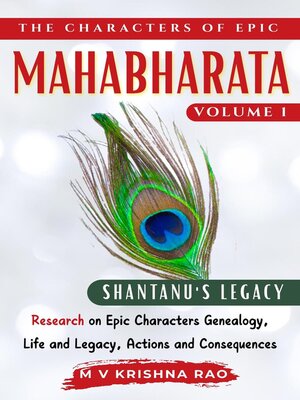
Sign up to save your library
With an OverDrive account, you can save your favorite libraries for at-a-glance information about availability. Find out more about OverDrive accounts.
Find this title in Libby, the library reading app by OverDrive.



Search for a digital library with this title
Title found at these libraries:
| Library Name | Distance |
|---|---|
| Loading... |
Unveiling the Epic's Genesis Through Its Most Pivotal Figures
Beginning with the Kuru Dynasty itself, we explore how a royal lineage became the crucible for testing the very nature of righteousness and power.
The framing narrative emerges through Janamejaya and Astika—the king whose thirst for vengeance against serpents becomes the occasion for the epic's telling, and the young Brahmin whose intervention saves both the serpent race and ensures the story reaches us across millennia. Their dynamic establishes the epic's central concern with the consequences of rage and the power of wisdom to transform destruction into preservation.
The Trinity of Foundation
At the heart of this volume lies the profound story of Shantanu, Satyavati, and Vyasa—three figures whose personal desires and moral compromises create the succession crisis that will eventually tear the kingdom apart.
Shantanu's passionate love leads to a kingdom without an apparent heir. Satyavati's pragmatic determination to secure her lineage introduces complexities that challenge traditional royal succession. Vyasa, the sage who becomes the epic's composer, embodies the tension between worldly involvement and spiritual detachment.
The Oath That Binds Destiny
Bhishma emerges as perhaps the most complex character in all literature—a man whose absolute commitment to his word becomes both his greatest virtue and the source of immeasurable suffering. His terrible oath of celibacy, made from love for his father, creates a void in leadership that echoes through generations. Through Bhishma, we explore how individual sacrifice can inadvertently sow the seeds of collective tragedy.
The Architects of War
The martial tradition that shapes the next generation finds its embodiment in Dronacharya and Kripacharya—the master teachers whose instruction creates both the greatest warriors and the deepest resentments of their age. Their stories reveal how the transmission of knowledge and skill becomes inseparable from the transmission of pride, prejudice, and the hunger for recognition.
The Panchala Dimension
The volume concludes with the introduction of the Panchala royal house through Drupada, Shikhandi, and Dhrishtadyumna—characters whose very existence challenges conventional notions of gender, destiny, and the possibility of transformation. Drupada's humiliation and his children's supernatural origins introduce themes of vengeance transcending natural law. At the same time, Shikhandi's unique journey from woman to man to instrument of fate expands our understanding of identity and purpose.
A Living Exploration of Character
The above is not merely a retelling of familiar stories but an excavation of character—an attempt to understand how individual psychology, social expectation, and cosmic purpose intersect to create the conditions for both heroism and catastrophe. Each profile examines not only what these characters do but also why they make the choices that either doom or redeem them.
The Mahabharata teaches us that character is destiny, but also that destiny is far more complex than simple moral arithmetic. Good intentions can lead to terrible consequences. Righteous actions can serve unrighteous ends. And sometimes, the most excellent service to Dharma requires its apparent violation.
For Readers New and Returning
Whether you come to these characters for the first time or return to deepen your understanding, this volume offers both accessibility and depth. The ancient wisdom speaks...







